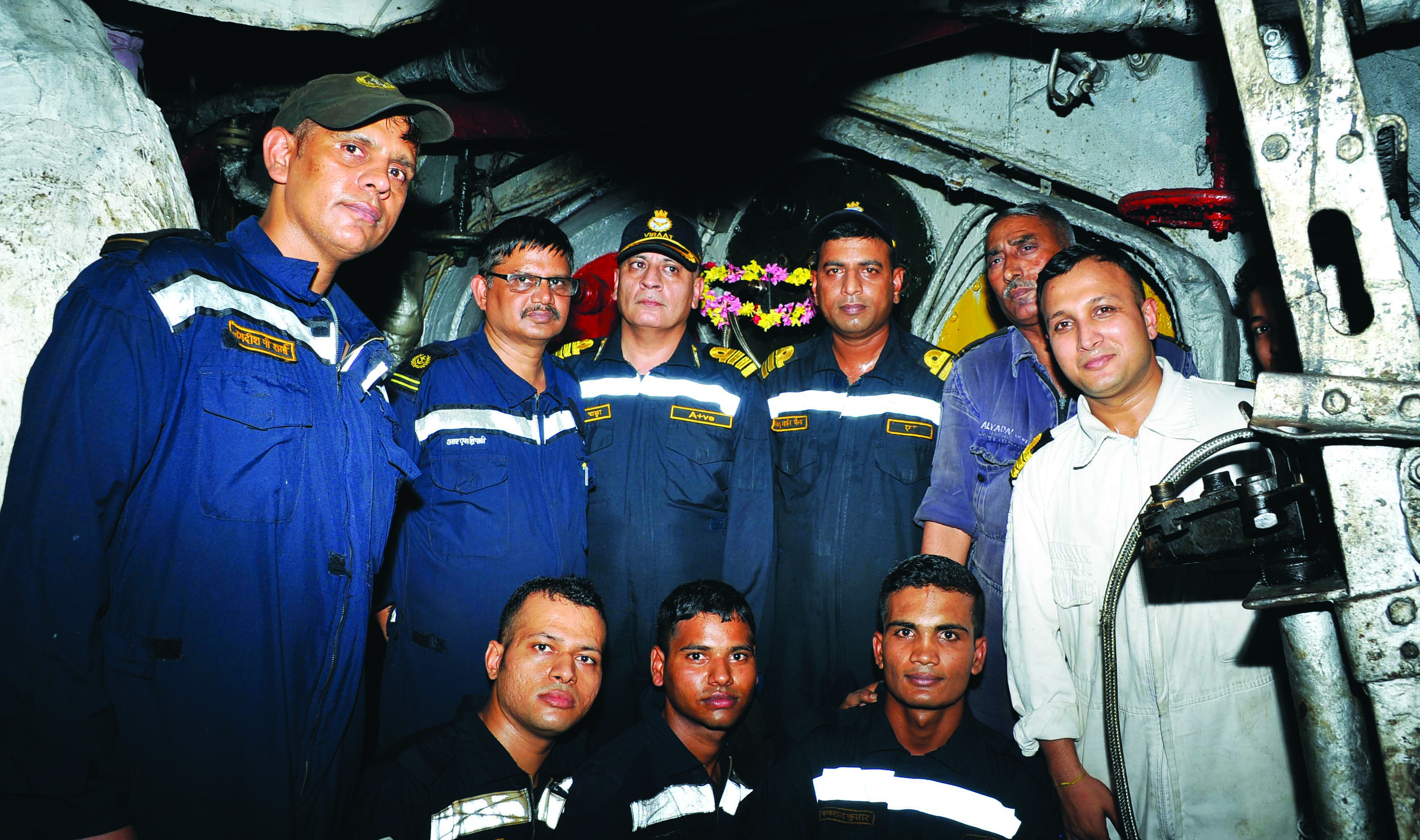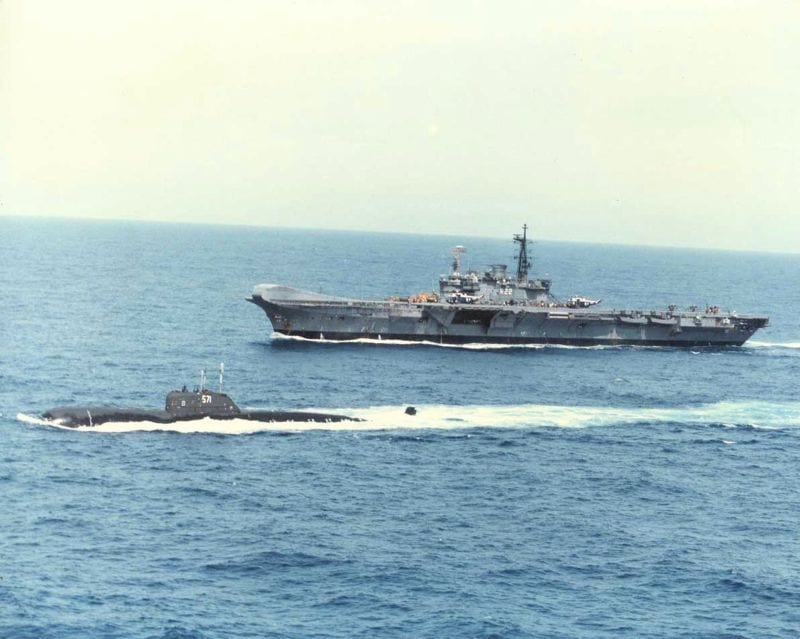INS Viraat and Sea Harriers of Indian Naval Air Arm
- Thread starter Ashwin
- Start date
You are using an out of date browser. It may not display this or other websites correctly.
You should upgrade or use an alternative browser.
You should upgrade or use an alternative browser.
Some hope still left ?
Some hope still left ?
Such Emotional drama is totally useless
Make a New Aircraft Carrier and Rename it as Viraat
Black Gang was the secret behind Viraat’s longevity - The Sunday Guardian Live

She holds the world record for being the longest serving warship. She has clocked 2,252 days at sea, travelling almost 11,000 km, implying that she has circumnavigated the earth 27 times. She has mothered aircraft and helicopters
that cumulatively clocked over 22,000 flying hours. Since her inception, her boilers have run for 80,715 long hours. She served the Indian Navy for 30 long and glorious years. Before that, she served the British Royal Navy for 27 years. She is probably the only warship constructed during the Second World War around 1944, to have served any country till date. “When the British handed her over to us, they said she would not run for more than seven years. We expected that she would serve for not more than a decade. But she stood strong for 30 years,” a former Commanding Officer of the ship told The Sunday Guardian. Yes, she is the recently decommissioned Indian aircraft carrier, Viraat. And nobody outside the Indian Navy knows the secret behind this stellar warship’s longevity.
It is hidden in the hearts of the pool of Naval engineers who have trained on-board her, and have served her for all these years. They are the Black Gang. They are the unsung heroes responsible for Viraat’s long serving life. “The engineers who served on-board her are the ones who have given more than anyone is expected, during their duty. It is their stellar performance which has led to her longevity. They, the Black Gang, are her unsung heroes,” said Vice Admiral A.K. Chawla. He was one of the 22 Commanding Officers of Viraat.
“‘Mother’, as she was fondly referred to in the Navy, had been commanded by 22 Captains since 1987. She was the flagship of the Navy since her inception. Around 40 flag officers, including five Chiefs of Naval Staff, were raised and groomed in her lap. Her legacy under the royal flag was no less. As HMS Hermes, she was commanded by 13 captains of the Royal Navy. Her role in Operation Mercy in 1974 and the Falklands War in 1982 are now textbook references for future navies,” a Naval information officer said.
A handout by the Ministry of Defence says, “Viraat played a major role in Operation Jupiter in 1989 during the Sri Lankan peacekeeping operation, after which she was affiliated with the Garhwal Rifles and Scouts of the Indian Army in 1990. She also saw action during Operation Parakram in 2001-2002, post the terrorist attack on Parliament. The ship was instrumental in honing the art of flying operations from a carrier deck in the Navy, which also resulted in seamless induction of INS Vikramaditya and its integration with the fleet. The ship has participated in various international joint exercises like Exercise Malabar (USA), exercise Varuna (French), Naseem-Al-Bahar (Oman Navy). She has also been an integral element of all annual theater level exercises (TROPEX). The last operational deployment of Viraat was for the International Fleet Review (IFR 2016) off Vishakhapatnam in February 2016.”
MOTHBALLED SHIP REVIVEDOrdinarily, the naval workforce wears white dungarees. But the dungarees of all the engineers on-board Viraat were laden with black soot. That is how they were named the Black Gang.
“It wasn’t easy,” recollects Commander D.S. Deswal, who was the first chief engineer of Viraat. After the aircraft carrier, named HMS Hermes, stopped serving the British Royal Navy in 1986, she was mothballed. Mothballing is the process of preserving the ship when she is not in usage. After that, she was sold to India. “It took us three-four months to revive her after acquiring her. We had real hard work to do to get her going. It was a very satisfying experience,” he told The Sunday Guardian.
Talking of the memories associated with the ship, Admiral Arun Prakash (Retired), said, “I landed on her for the first time in 1983 when I was undergoing a training in UK as a pilot. At the time, she looked majestic. She appeared from a layer of fog in the English Channel, and I was stunned. She looked as big as an entire city. At that time, I thought, you have a lot of power in hand when you command a ship like her. At the time, I did not think that India would acquire her. But seven years later, I found myself in command of the ship.”

MINOR FIRES, BOILER PROBLEMS
For almost a decade after being inducted in the Indian Navy, Viraat was plagued with problems almost throughout the period. “Minor fires on-board would break out frequently. Time had caught up with her. Her electric cabling was old,” a senior serving naval officer said. The ship was steam-propelled. The boiler, built in 1944, used to be a continuous source of problems. But the engineers didn’t give up on her. “The issues were around the boiler casing. Gas leakage used to happen. Those wires needed to be repaired. They needed to be fitted every time,” recollected L.S. Jayanath, the longest serving officer on-board Viraat.
Carrying out repair work in the boiler room was not easy either. The boiler room was no less than a warzone. It is situated eight floors beneath the ship’s deck. Each floor is descended by a narrow metal ladder which may be marred by shaky railings. “In any case, the railings can’t be held on to when the boiler is functioning. The temperature in here is above 60 degrees Centigrade at such times. The metal of the ladder and the railings is so hot, that you dare not touch them,” a serving engineer on-board Viraat told this correspondent as she took the narrow metal strips to reach eight floors beneath the deck. With barely any ventilation, the boiler room was a cramped space with tightly knit instruments and control panels. One cannot imagine working in 100% humidity at 60 degrees Centigrade on a regular basis. And yet, this is what the Black Gang has done year after year to keep the ship running.
“When there is any leakage in the boiler room, the temperature rises further. It used to get very difficult to carry out repairs then. Our engineers took turns to go in for a few seconds, and fix the leak,” said Real Admiral Ajendra Bahadur Singh, a former Commanding Officer of Viraat. “At one point, we held on to the feet of the chap who went in for repairs. We told him to keep moving his toes. Till the time he kept moving them, we held him there. The minute he stopped moving them, we dragged him out. Those were very tough situations,” another senior Navy officer told The Sunday Guardian.
Such gruelling conditions tested the mettle of the engineers. It also created a strong bond of affinity among them. “We had a great crew. Every person on-board did much more than was expected of him,” Rear Admiral Singh said.
Before being recommissioned, she had gone for a major refit. Another big refit took place in 1998. “That is when she turned around,” Chief of Naval Staff Admiral Sunil Lanba told The Sunday Guardian. He was the Commanding Officer of the ship between 1996-97.

WHY ‘BLACK GANG’
“The boiler of the ship runs on furnace oil. It is oil-propelled. So when the boiler runs, the furnace oil gives out a black soot. Ordinarily, the naval workforce wears white dungarees. But the dungarees of all the engineers on-board Viraat were laden with black soot. That is how they were named the Black Gang,” said senior engineers Abhinand Ramakrishnan and Swarup Das.
After the day of the decommissioning this week, this elite force of engineers serves as the backbone of India’s expertise in handling aircraft carriers. On the day the Naval Ensign and Commissioning Pennant were lowered on the deck of Viraat, a team of gritty engineers stood by, with tears in their eyes and prayers in their hearts. “Just because we are men, we cannot cry. Otherwise, it is a very emotional moment for us,” an officer said.







